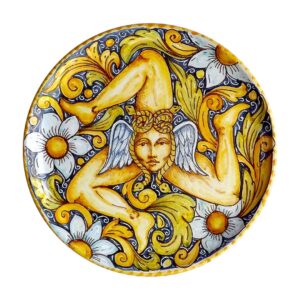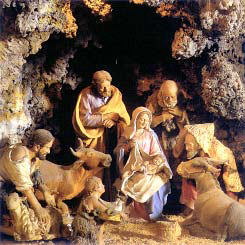The Trinacria, also known as Triskelion, is the familiar three-legged symbol of Sicily.
Everywhere you go in Sicily, you will see a Trinacria, the symbol of our beautiful island. And if you are tempted to bring one home, you’ll have plenty of choices, from sophisticated ceramic Trinacria wall plates from Caltagirone to inexpensive fridge magnets. Of course, we do hope that you’ll go for one of the stunning Sicilian pottery pieces handmade by local artists and artisans, such as Ghenos or Sofia.
Regardless of your choice, you may want to learn about the origin of the Trinacria and impress your fellow travelers with some captivating anecdotes about the origins of Sicily and its three-legged symbol.
Let’s explore the island’s myths and legends, one by one.
Continue reading


